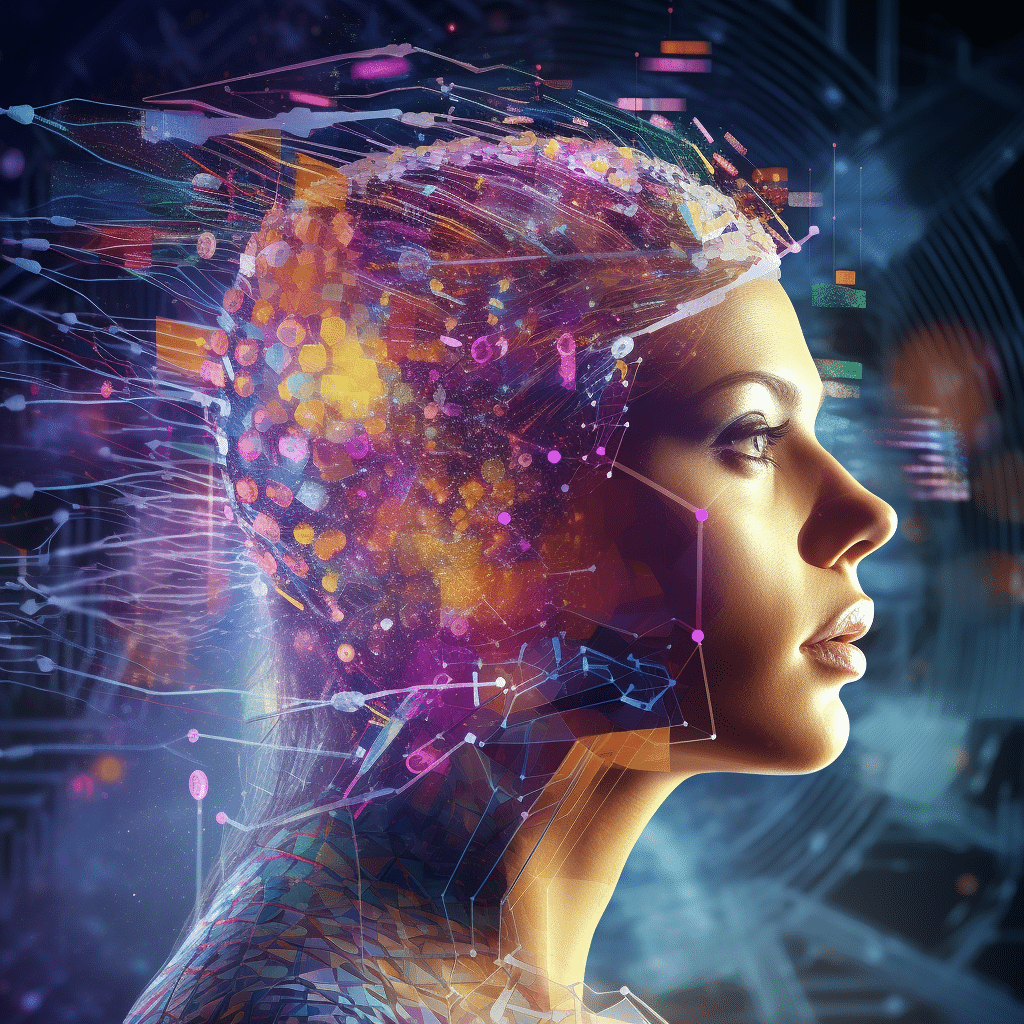
The Potential of AI in Drug Repurposing for Rare Diseases

Introduction
Rare diseases are often neglected due to their low prevalence, making it challenging for pharmaceutical companies to invest in dedicated drug discovery and development efforts. However, with the advancement of artificial intelligence (AI) technologies, there is renewed hope in identifying potential treatments for these often-life-threatening conditions.

What is Drug Repurposing?
Drug repurposing is the process of identifying new therapeutic uses for existing drugs that were primarily developed for a different condition. It offers a cost-effective and time-efficient strategy to leverage existing knowledge about drug safety and pharmacokinetics in order to tackle rare diseases.
The Role of AI
AI plays a pivotal role in expediting and enhancing drug repurposing efforts. By analyzing vast amounts of medical data, including electronic health records, genomic information, clinical trials data, and published scientific literature, AI algorithms can identify patterns, correlations, and potential drug-target interactions that would be difficult for humans to discern.
“AI algorithms have the potential to analyze complex datasets and identify hidden connections that may open up new possibilities for drug repurposing.” – Dr. Emily Carter, AI in Medicine Journal
Benefits of AI in Drug Repurposing
-
- Accelerates the identification of potential treatments for rare diseases
-
- Reduces costs by repurposing existing drugs
-
- Improves patient outcomes by bringing novel therapies to market quicker
-
- Offers hope and alternative solutions for patients who have exhausted conventional treatment options
Real-World Examples
1. Drug repurposing for cystic fibrosis
AI technologies have identified several FDA-approved drugs that show potential for treating cystic fibrosis. These drugs were initially developed for other conditions such as hypertension and diabetes but exhibited promising effects on the underlying mechanisms of cystic fibrosis. Clinical trials are now underway to assess their efficacy.
2. Repositioning drugs for rare cancers
Cancer subtypes with low prevalence often lack targeted therapies. AI algorithms have helped identify existing drugs that could be repurposed to treat these rare cancers. This approach has shown promising results in clinical trials, offering hope to patients who previously had limited treatment options.
The Future of AI in Drug Repurposing
As AI continues to evolve, its potential in drug repurposing for rare diseases will only grow. By integrating AI technologies and machine learning algorithms with precision medicine initiatives, personalized treatments tailored to rare disease subtypes can be developed, improving patient outcomes and overall healthcare.

Conclusion
The potential of AI in drug repurposing for rare diseases is immense. It offers a ray of hope for patients and provides an avenue to expedite the development of potential treatments. By leveraging the power of AI, pharmaceutical companies, researchers, and healthcare professionals can come together to address the unmet needs of rare disease communities worldwide.
How can AI contribute to the identification and repurposing of drugs for rare diseases?
AI can contribute to the identification and repurposing of drugs for rare diseases in several ways:
1. Data analysis and pattern recognition: AI algorithms can analyze large amounts of biomedical data, including genetic information, medical records, scientific literature, and clinical trial data. By identifying patterns and correlations, AI can help identify potential drug targets and repurpose existing drugs for rare diseases.
2. Drug screening and virtual drug design: AI can accelerate the process of drug screening by virtually testing millions of compounds and predicting their likelihood of success. This can help identify potential candidates for rare diseases that may not have been traditionally explored due to limited resources or understanding.
3. Simulation and modeling: AI can simulate molecular interactions between drugs and their targets to understand their mechanisms of action. This knowledge can be used to identify potential off-label use of existing drugs for rare diseases, as well as virtual screening of small molecule libraries to find new compounds.
4. Repurposing approved drugs: AI can analyze large databases of approved drugs and their known bioactivities to identify potential off-label uses for rare diseases. By leveraging the existing safety profile and regulatory approval of these drugs, AI can significantly reduce the time and cost required for drug development.
5. Clinical trial optimization: AI can help design more efficient clinical trials by identifying patient cohorts with specific molecular profiles that may respond better to certain drugs. This personalized approach can increase the chances of success and speed up the drug development process for rare diseases.
Overall, AI can harness the power of data-driven analysis, computational modeling, and pattern recognition to accelerate the drug discovery process, identify potential drug candidates, and repurpose existing drugs for the treatment of rare diseases.
How can AI-driven drug repurposing help accelerate the development of treatments for rare diseases
AI-driven drug repurposing can help accelerate the development of treatments for rare diseases in several ways:
1. Identifying potential drug candidates: AI algorithms can analyze vast amounts of data, including molecular structures, biological pathways, and clinical trial results, to identify existing drugs that may have therapeutic potential for rare diseases. This saves time and resources by avoiding the need for de novo drug development.
2. Predicting drug efficacy: AI models can predict the effectiveness of repurposed drugs by analyzing their interactions with disease-specific molecular targets. This helps prioritize drug candidates and reduces the need for extensive preclinical and clinical testing.
3. Optimizing drug combinations: AI algorithms can evaluate the potential synergy of combining repurposed drugs with existing treatments for rare diseases. This personalized approach can lead to more effective and tailored therapies for individual patients.
4. Accelerating clinical trials: AI can analyze real-world patient data, such as electronic health records, genomics, and medical literature, to identify suitable patient populations for clinical trials and stratify them based on their disease characteristics. This speeds up patient recruitment and trial design.
5. Discovering novel uses for approved drugs: AI can uncover unexpected therapeutic effects of existing drugs by analyzing large-scale datasets. This can lead to the repurposing of approved drugs for rare diseases that were not originally intended.
Overall, AI-driven drug repurposing provides a data-driven, efficient, and cost-effective approach to identify and develop treatments for rare diseases, helping to bridge the gap between drug discovery and clinical implementation.
What are some successful examples highlighting the potential of AI in drug repurposing for rare diseases?
There are several successful examples that highlight the potential of AI in drug repurposing for rare diseases:
1. DrugPredict: Developed by the Children’s Hospital of Philadelphia, DrugPredict is an AI-based platform that uses deep learning algorithms to predict the efficacy of existing drugs for rare diseases. It analyzes large-scale genomics and drug response data to identify potential drug candidates for repurposing.
2. HealNet: HealNet is an AI-based platform developed by a team of researchers from Stanford University. It uses network-based analytics to identify novel drug-disease associations and predict drug repurposing opportunities. It has been successfully applied to identify potential treatments for various rare diseases.
3. DeepAS: DeepAS is an AI-based system developed by researchers from the Université de Sherbrooke in Canada. It uses deep learning algorithms to predict drug-disease associations and identify potential drug repurposing opportunities for rare diseases. It has shown promising results in identifying new uses for existing drugs.
4. PharmGPS: PharmGPS is an AI-powered platform developed by Discovering New Therapeutic Uses for Existing Molecules (DNTUEM) consortium. It integrates various data sources such as gene expression, drug-target interactions, and clinical data to predict drug repurposing opportunities. It has been successful in identifying potential treatments for rare diseases.
5. SOMMA: SOMMA (Similarity-based Ontology-guided Multi-target Multi-drug Analysis) is an AI-based method developed by researchers at the Barcelona Supercomputing Center. It utilizes semantic similarity measures and network analysis to identify potential drug repurposing opportunities. It has been used to discover potential treatments for rare diseases such as Niemann-Pick Disease type C.
These examples demonstrate the potential of AI in accelerating drug repurposing for rare diseases, providing a faster and more cost-effective approach to identifying new therapeutic options for patients.
What are the key challenges faced in utilizing AI for drug repurposing in the context of rare diseases?
When utilizing AI for drug repurposing in the context of rare diseases, several key challenges are faced:
1. Limited data availability: Rare diseases often have limited data available due to their low prevalence. This scarcity of data makes it challenging for AI models to learn patterns and make accurate predictions.
2. Lack of comprehensive understanding: Rare diseases often have an incomplete or limited understanding of their molecular mechanisms and pathways. This hinders the development of AI models, as they depend on a comprehensive understanding of the disease biology to identify potential drug targets.
3. Difficulty in clinical trial recruitment: Rare diseases have a small patient population, which makes it difficult to recruit enough participants for clinical trials. AI models require large-scale and diverse data to effectively identify potential drug candidates, but this is often difficult to obtain for rare diseases.
4. Validation and regulatory hurdles: Drug repurposing based on AI predictions may face challenges in validation and regulatory approval. There is a need for robust validation methodologies and regulatory frameworks to ensure the safety and efficacy of repurposed drugs for rare diseases.
5. Ethical considerations: AI-based drug repurposing may raise ethical concerns, such as privacy issues, informed consent, and equitable access to therapies. The ethical implications of using AI models in the context of rare diseases need to be carefully addressed.
Addressing these challenges requires collaboration between various stakeholders, including researchers, clinicians, pharmaceutical companies, regulatory agencies, and patient advocacy groups. By overcoming these hurdles, AI has the potential to significantly accelerate drug discovery and repurposing efforts for rare diseases.









Thanks for sharing. I read many of your blog posts, cool, your blog is very good.